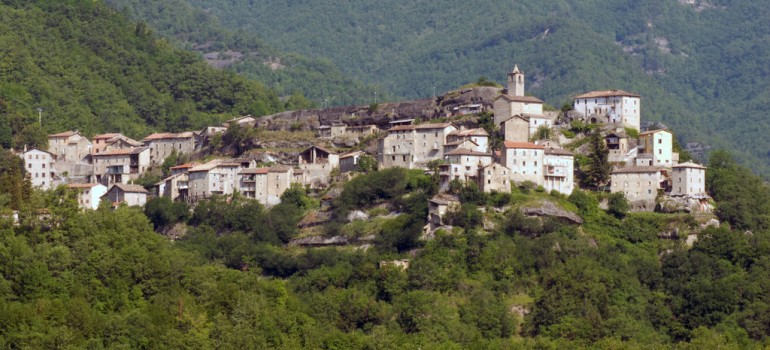
Acquasanta Terme is located along the ancient route of the Roman road Salaria, where the stream Garrafo flows into the river Tronto. The territory extends over 138 sq km, with altitudes between 200 and 2000 meters, and includes about 50 villages scattered in a vast and ever-changing environment. It is located within the Gran Sasso – Monti della Laga National Park. Acquasanta is very renowned for its thermal water; all around the little town the surroundings become more and more bitter and silent, crossed by ancient winding tracks and dotted with solid evidence of the past. The name of the town goes back to the ancient name “aquae” owing to the famous spring waters already know in Roman times. Acquasanta is also renowned for its vast deposit of travertine. Between the 10th and 11th century it was submitted to the jurisdiction of the Abbey of Farfa but it was soon attracted to the area of influence of the count Bishop of Ascoli. In the 13th century there were quite a few noble families. In the 16th century the mountains around Acquasanta were the perfect shelter for local bandits so this area became the scenery in the history of banditry and its violent repression. In Acquasanta you can admire San Giovanni Battista Church which preserves two painting by Giulio Cantalamessa, painter and art critic, and Santa Maddalena ( 14th century) a circular building which preserves a painting of la Maddalena by Cardi. Coming from Ascoli before reaching Acquasanta you’ll find the astonishing “Castel di Luco”, a medioeval castel (11th century) with circular plan. In Valledacqua you can visit the ancient Church of San Bendetto and the Monastery (13th century) worth visiting is Paggese, a beautiful village. Here particulary noteworthy is San Lorenzo (15th century) which preserves a fine 15th century triptych ( La Madonna con il Bambino tra S.Marco e S.Lorenzo) attributed to Pietro Alemmano. In Quintodecimo there is SS. Crocifisso which has a fine portal dated 1562 and Santa Maria delle Piane which was restored by Augusto Paolo Mussini, a monk. Other interesting villages are: Tallaccano where there is San Pietro, Venamartello Belvedere situated in the River Tronto’s valley. In Capodigiro there is Santa Caterina D’Alessandria; Its portal has tuff bas–reliefs. In Piedicava there is an ancient water mill (19th century). Noteworthy are the Roman walls which support the Roman road Salaria and belong to the Augustan age, and Ponte Vecchio (16th century). Pito, Pozza and Umito are the base for excursions to the beautiful Parco della Laga, to the Volpara and Prata waterfalls and to “La Macera della Morte”, an impressive rock.